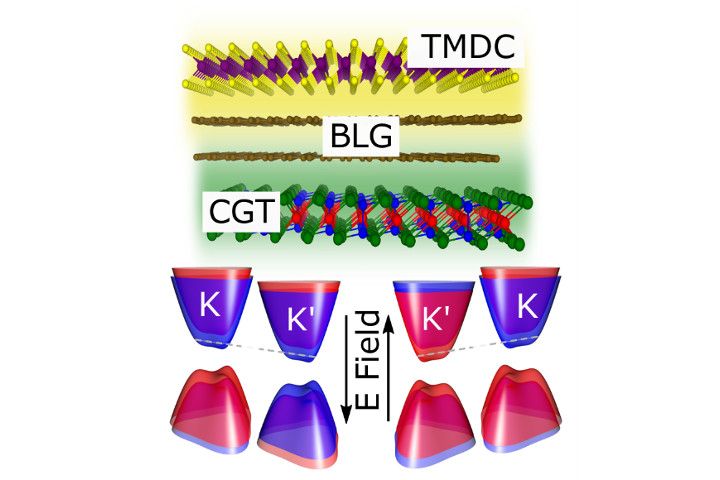
Physical Review Letters
The bottom-up approach of stacking disparate two-dimensional (2D) materials promises unprecedented versatility in device functionality with ramifications in both fundamental physics and technology. Spintronics in particular can greatly benefit from van der Waals engineering, as it inherently relies on an interplay between spin and charge, whose properties are material dependent. Indeed, while transition-metal dichalcogenides (TMDCs) exhibit giant spin-orbit coupling and 2D magnets large exchange coupling, materials such as graphene or phosphorene effectively lack both. Since these two couplings are pivotal for the functioning of spintronic devices, it is highly desirable to design ways to control them. Klaus Zollner, Martin Gmitra, and Jaroslav Fabian proposed a single van der Waals heterostructure consisting of bilayer graphene (BLG) sandwiched by a 2D ferromagnet Cr2Ge2Te6 (CGT) and a TMDC, as a realistic platform for not only generating, but also swapping exchange and spin-orbit coupling. Such structures were termed ex-so-tic, for supplying exchange (ex) and spin-orbit (so) coupling in a single device, by gating. These bifunctional systems demonstrate the potential of van der Waals engineering using 2D crystal multilayers.
SFB 1277
Doris Meier
Universität Regensburg
Phone: +49 (0) 941-943 2264
Email: SFB1277.Office@ur.de